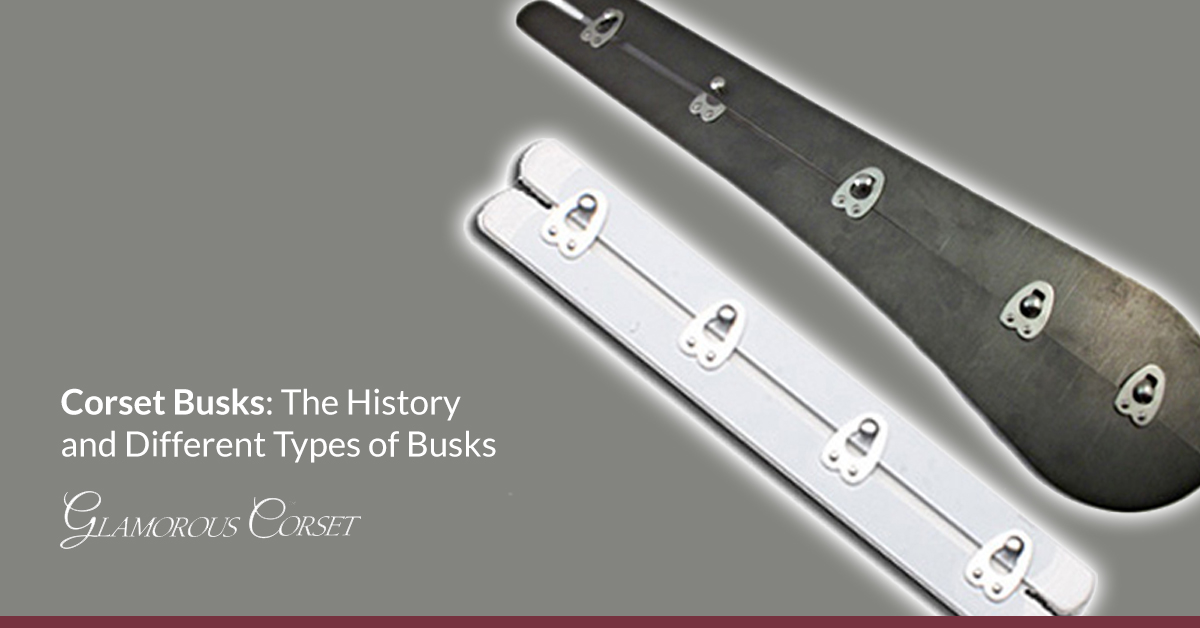Blog
Corset Busks: The History and Different Types of Busks
When it comes to corsetry, a few things have always been true. Since the 1500s, these garments have been designed to shape a woman’s upper body, typically through the use of stiff textiles, rigid supports, and a tight fit. It wasn’t long before the inclusion of a vertical busk was placed front and center to keep the garment and the torso erect.
While shapes, fashions, and acceptable uses for corsets have changed somewhat over the centuries, the basic construction hasn’t strayed much from the original concept.
Waistlines, hemlines, and pretty much every other part of a woman’s typical wardrobe have gone through radical transformations since the reign of Queen Elizabeth I: few modern women would put up with the rigors of ruffs and farthingales these days, not to mention the oppressive feel of heavy brocade from the nape of the neck to the tip of the toes.
Corsets, however, are still used to support the breasts, control the tummy, cinch the waist, and generally create a more feminine silhouette. What role do busks play in the utility of this garment, and how have they been adapted over time to suit the demands of function and the whims of fashion?
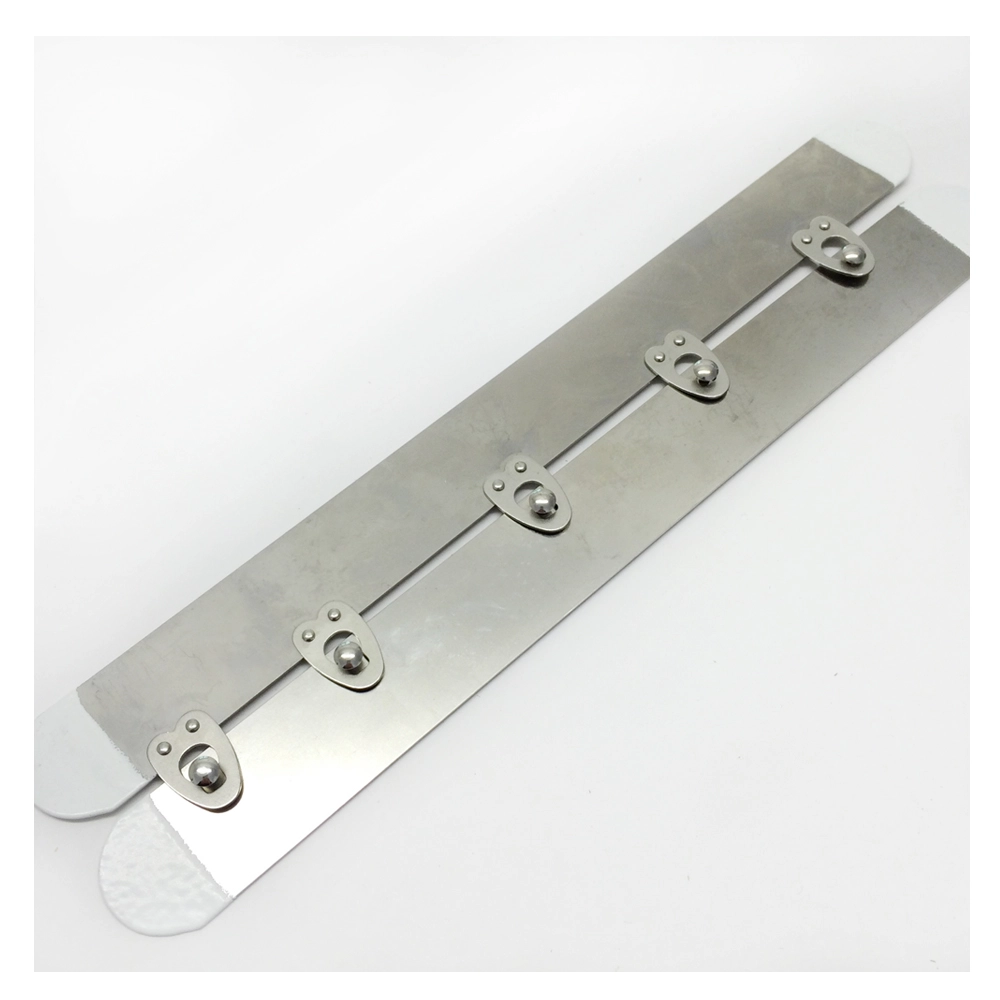
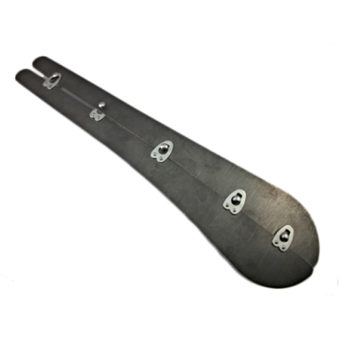
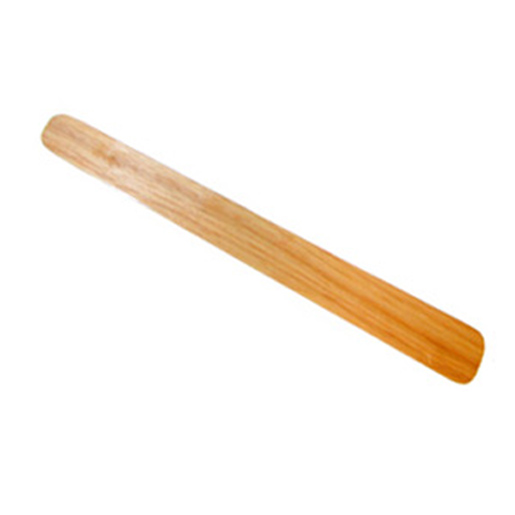
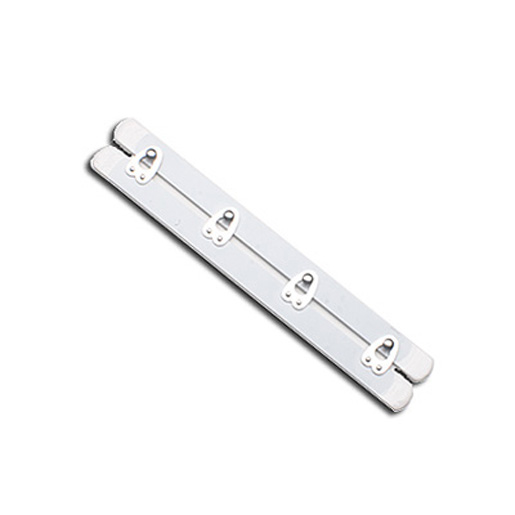
Single-Piece Busk
Busks were added to the front of a corset fairly soon after the garment was invented, with 16th-century models from Spain featuring a stiff wooden or bone busk in the front and baleen (i.e., whalebone) supports all around — hence the name “boning.”
Early busks were made from a variety of rigid materials, such as wood, bone, ivory, horn, baleen, and shell.
Busk Construction
The first busks were designed as a single piece of material in a long rectangular or triangular shape that stretched from about the sternum down to the lower belly. They were typically flat, but some were curved, depending on the desired effect and, one would hope, the comfort of the wearer.
Early busks sometimes featured a small hole at the top or bottom so that they could be sewn into garments to keep them in place.
Busk Carvings
Like any type of design, form follows function, and busks were no exception. It wasn’t long before these practical garment supports gained decorative elements in the form of inlay and carvings.
Some were incredibly ornamental, featuring delicate floral designs and depictions of animals, mythical creatures, buildings, or ships.
Some even displayed messages like “hope.” You thought stones engraved with inspirational messages were new? Nope: apparently, busks were the inspirational message stones of the 16th century.
Because of the placement of this intimate item, it wasn’t unusual for a woman’s partner to gift her a busk carved with racy images, messages, or poetry inscribed on it. Today, sweetheart busks can be found on display in museums.
Oh, what fun the carvers must have had, being privy to romantic sentiments like “He enjoys sweet sighs, this lover / Who would very much like to take my place.” In other words, dude was jealous of the busk that sat between his lady love’s breasts all day.
Two-Piece/Split Busk
In the mid-19th century, the two-piece, or split, busk was introduced and quickly gained popularity, thanks to front-fastening functionality that made it much easier to get into and out of corsets.
The most common split busk today is the straight busk — which is essentially a long rectangular shape — but a few other models were popular during different eras.
Spoon Busk
When you see a spoon busk, you can immediately divine where it got its name. This model is narrow at the top, with a wider, spoon-shaped circle at the bottom, featuring convex curvature. Invented in 1879 by Joseph Beckel of New York City, this design was intended to support and even show the curve of the belly.
At the time, waistlines had shifted downward dramatically, from the empire waists of the early 19th century, to the natural waist and bell-shaped skirts of the mid-1800s, to low-waisted bustle skirts that were tighter across the lower belly.
Showing the curvature of the torso may have been fashionable at the time, but women still wanted support and comfort, and the spoon busk provided it.
Conical Busk
As waistlines continued to drop moving into the 20th century, the conical busk replaced the spoon busk for a short time. Similar in shape, the conical busk tapered at the top but featured a pear-shaped bottom — like the spoon busk, but flat instead of curved.
This hybrid between a spoon and straight busk supported the S-shaped silhouette of the Edwardian era, helping to emphasize the curve of the bosom and butt while flattening the belly.
A Busk for Every Body
Today, busks are typically made of steel, and thanks to modern manufacturing, they come in a range of lengths, widths, and shapes, although straight busks remain the most common. Busks also come in a rainbow of hues to match any corset or add a complementary pop of color, and some even feature blingy embellishments.
Standard busks are one-half inch wide and feature rounded tips to prevent undue pressure and fraying of fabric, not to mention uncomfortable poking. Wide busks are an inch wide on each side for incredible strength and support. They are best suited to tightlacing.
In over 500 years of regular use, busks haven’t changed much. But honestly, there’s not much to mess with when it comes to this central corset support. With just a handful of features to choose from, it’s easy to find the right busk for your particular wants and needs.
To stay up-to-date with weekly blog posts, waist training tips, and the chance to win one of our monthly corset giveaways, follow us on Facebook, Instagram & subscribe to our mailing list today! Want to find the perfect steel boned corset? Shop some of our favorites: underbust corsets, overbust corsets, corset dresses. You can also shop our corsets by material: cotton corsets, denim corsets, leather corsets, mesh corsets, pvc corsets, and satin corsets. Have questions about getting started with waist training or finding the right size corset? Contact us!

My name is Rachel, I am the owner of Glamorous Corset, a small business founded by me in 2010. Back In 2005, I was in a car accident that left me with a herniated disk. Much to my surprise I learned steel boned corsets were beneficial to several medical injuries including mine. I was always intrigued with corsetry, their history and their beautiful aesthetic. I love sharing knowledge about corsets, educating my wonderful readers and breaking the negative stigma related to corsetry. In combination with my years of research and personal experience I hope my articles are useful and can help anyone who has struggled with some of the same things I have. More about me…


